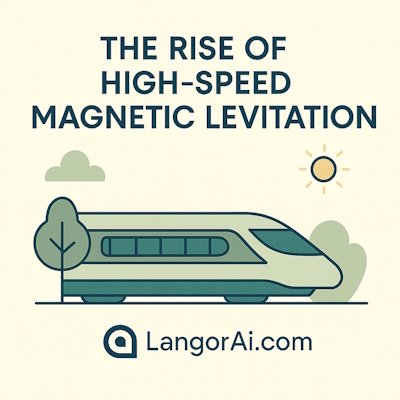
IELTS Reading Practice Test – Passage 1
The Rise of High-Speed Magnetic Levitation (Maglev) Rail Transport
Magnetic levitation, commonly known as “Maglev” transportation, represents one of the most advanced breakthroughs in modern rail travel. Unlike traditional trains that rely on wheels and tracks, Maglev trains float above a guiding rail using powerful magnetic fields. The absence of physical contact drastically reduces friction, allowing these trains to achieve remarkably high speeds while maintaining a smooth and quiet ride.
The concept of magnetic levitation emerged in the early 20th century, but it was not until the late 1970s that the first experimental Maglev systems began operating in Germany and Japan. Engineers believed that by eliminating the mechanical limitations of wheels, trains could surpass speed records previously thought unattainable. The idea was ambitious and costly, but the potential advantages—efficiency, speed, and reduced maintenance—were compelling.
Today, the most famous example of Maglev technology in operation is the Shanghai Maglev in China. Opened in 2004, it connects Shanghai Pudong International Airport with the city’s outskirts, covering 30 kilometers in just seven minutes. Traveling at speeds up to 431 km/h, it remains one of the fastest commercial trains in the world. The project symbolized China’s commitment to high-speed transportation and technological leadership.
Japan, meanwhile, has pursued magnetic levitation with its Chuo Shinkansen project. This line, currently under development, aims to connect Tokyo and Osaka, reducing travel time from 2.5 hours by bullet train to just over an hour. The trains have already achieved test speeds above 600 km/h. However, construction has faced delays due to environmental concerns, land acquisition challenges, and high infrastructure costs.
Despite the impressive capabilities of Maglev trains, widespread adoption remains limited. The construction of Maglev tracks requires specialized materials and precise engineering, making installation far more expensive than conventional rail lines. Additionally, because Maglev trains are incompatible with existing rail networks, entire routes must be built from scratch. This raises questions about cost-effectiveness, particularly for countries with long-established rail systems.
However, many experts believe Maglev represents the future of sustainable mass transit. Because the trains produce no direct emissions and require less long-term maintenance, they may become economically viable as energy prices rise and environmental goals become more urgent. Whether Maglev becomes a global standard or remains a symbol of futuristic ambition depends largely on political will, public investment, and long-term transportation planning.
Questions 1–14
Questions 1–4: TRUE / FALSE / NOT GIVEN
Write: TRUE, FALSE, or NOT GIVEN.
Questions 5–9: Choose the correct letter A, B, C or D.
A) Lower ticket prices
B) Reduced friction and increased speed
C) Compatibility with existing rails
D) Reduced need for electricity
A) focus on aviation expansion
B) leadership in high-speed transit technology
C) shift toward cheaper travel solutions
D) reliance on foreign engineering
A) Low passenger demand
B) Environmental and land-use issues
C) Lack of technological expertise
D) Poor government planning
A) Lack of public interest
B) Existing rail networks are incompatible
C) Insufficient train speeds
D) Safety concerns
A) Political and financial commitment
B) Attracting private tourists
C) Reducing airport usage
D) Limiting foreign competition
Questions 10–14: SHORT ANSWER
Answer in ONE OR TWO WORDS.
Answer Key & Explanations
1 → TRUE – The text clearly states Maglev trains float without physical contact.
2 → FALSE – The Shanghai line opened in 2004, not the 1970s.
3 → FALSE – The project is still under development.
4 → TRUE – Maglev requires completely new rails.
5 → B – Reduced friction enables high speed.
6 → B – The Shanghai Maglev represents technological leadership.
7 → B – Environmental and land issues are specifically mentioned.
8 → B – Existing rail networks are not compatible.
9 → A – Political will and investment are key.
10 → Japan
11 → High infrastructure cost
12 → None (no direct emissions)
13 → Reduced mechanical friction
14 → Entire rail lines / new tracks
⚠️ Common trap: If the text says “under development,” any option saying “is now operating” → FALSE.
